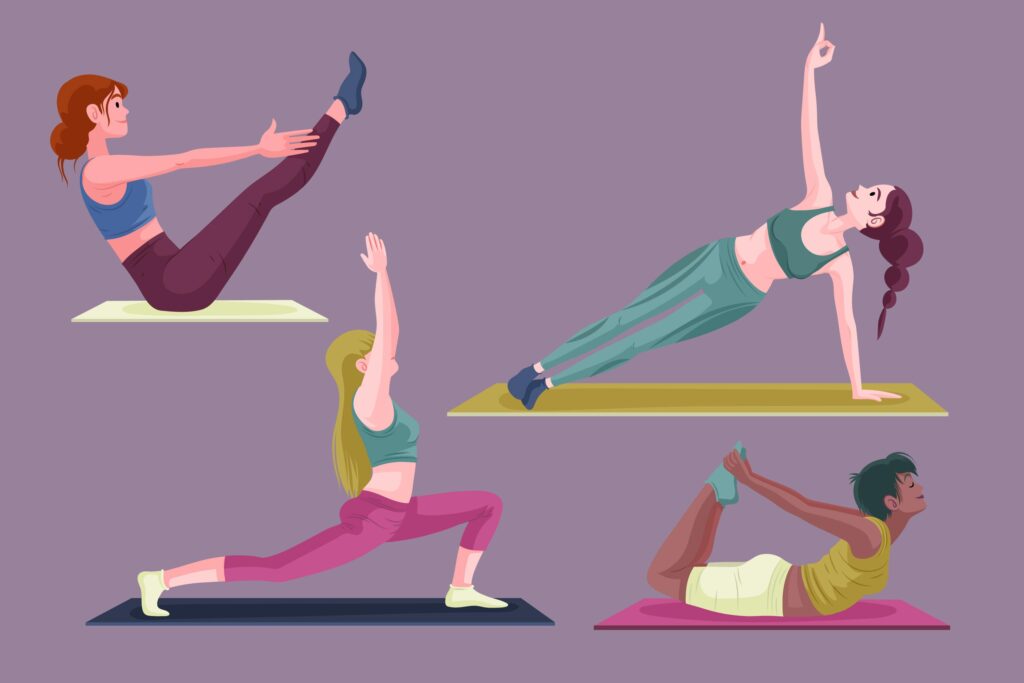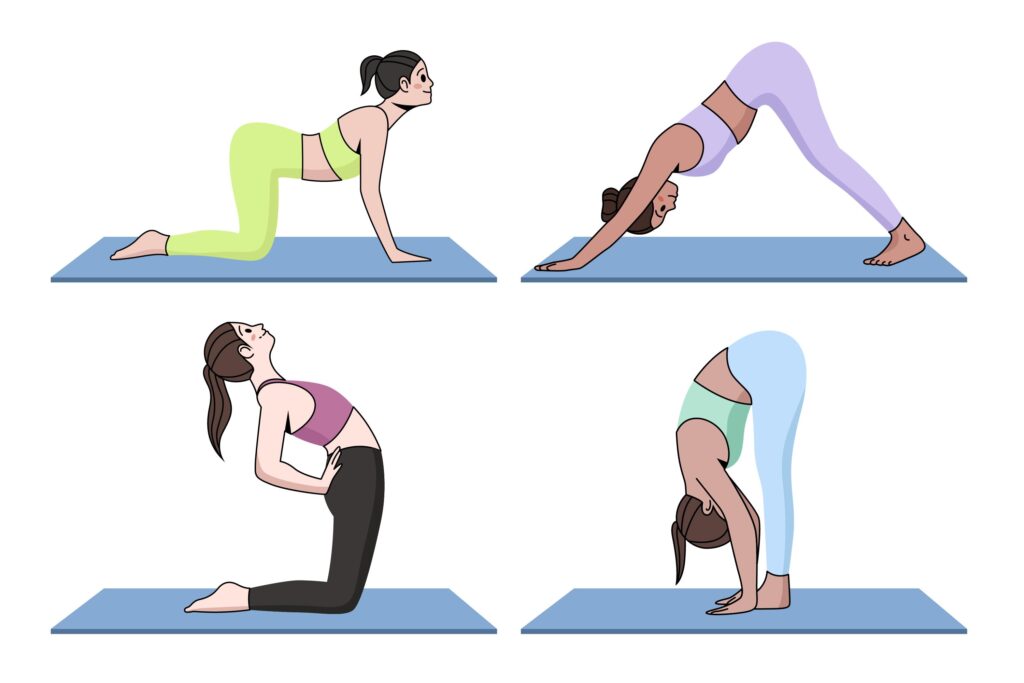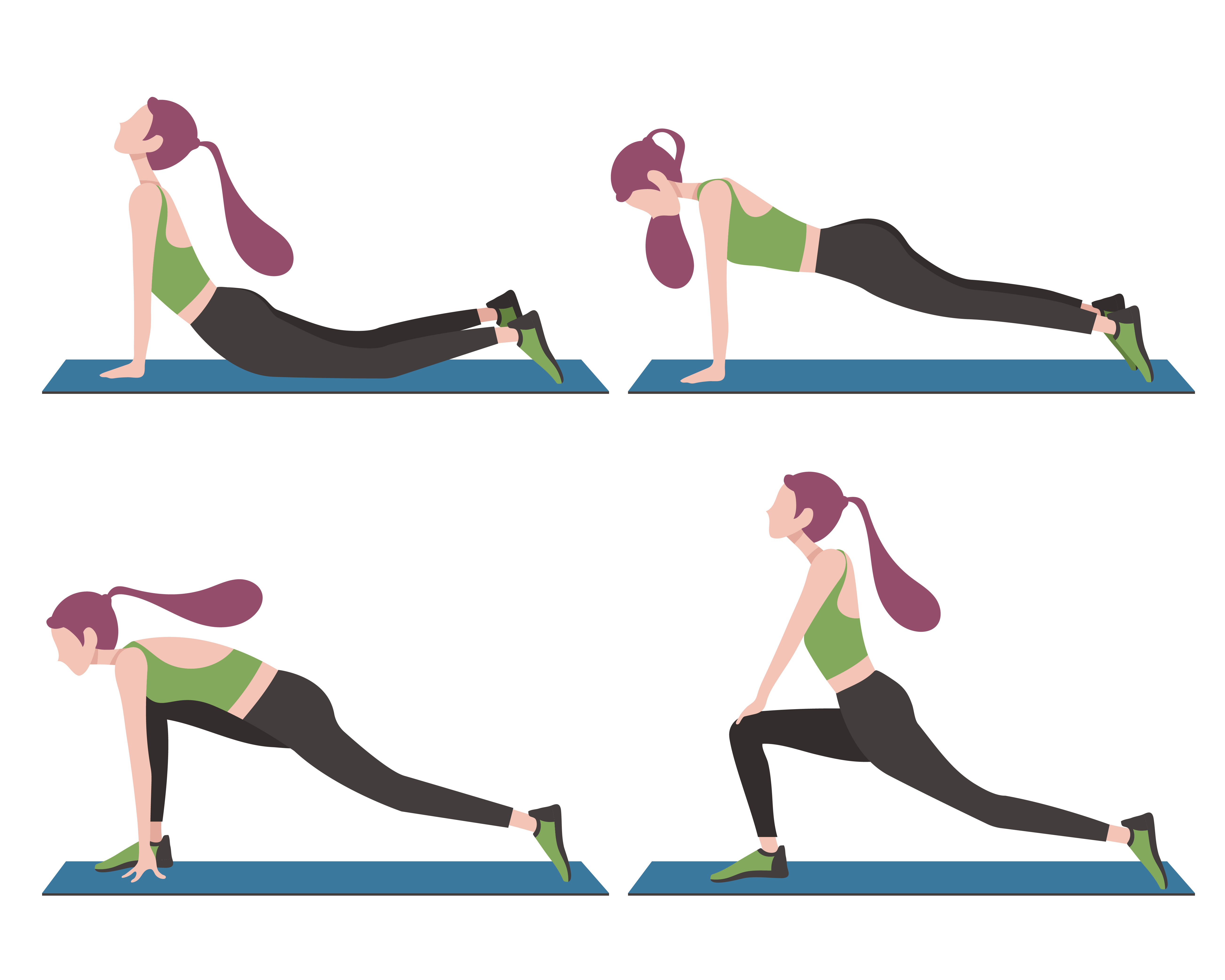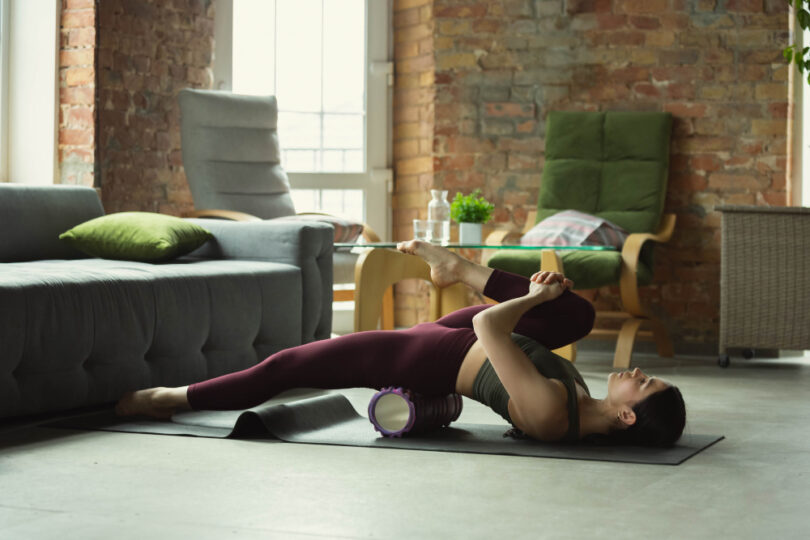Table of Contents
Introduction
Yoga is an ancient practice that strengthens the body and relaxes the mind. In recent years, yoga has gained immense popularity for its ability to improve flexibility, build strength, and enhance overall well-being. One area where yoga can be particularly beneficial is the lower body. This article explores the various yoga poses and techniques that can help tone and strengthen the lower body.
Benefits of Yoga for the Lower Body
Yoga offers several benefits for the lower body, including:
- Improved Flexibility: Yoga poses to stretch and lengthen muscles, tendons, and ligaments, improving flexibility in the hips, hamstrings, and calves.
- Increased Strength: Yoga poses that engage the lower body, such as lunges and warrior poses, help build strength in the legs, glutes, and lower back.
- Better Posture: Yoga helps correct posture by strengthening the muscles that support the spine, pelvis, and hips, reducing the risk of lower back pain.
- Enhanced Balance and Stability: Many yoga poses require balance and coordination, which can help improve stability and prevent falls, especially as you age.
- Pain Relief: Yoga can help alleviate lower body pain, such as sciatica, by improving flexibility, strength, and alignment.
- Improved Circulation: Certain yoga poses, like inversions, can help increase blood flow to the lower body, promoting circulation and reducing swelling.
- Stress Reduction: Practicing yoga can help reduce stress and tension in the lower body, promoting relaxation and overall well-being.
- Mind-Body Connection: Yoga encourages mindfulness and body awareness, which can help you become more attuned to the needs of your lower body and make healthier choices.
Incorporating yoga into your routine can strengthen and flex your lower body, improving your overall physical health and well-being.

Basic Yoga Poses for Lower Body
Here are some basic yoga poses that target the lower body:
- Forward Fold (Uttanasana): Stand with feet hip-width apart, hinge at the hips, and fold forward, reaching toward the floor or your shins. This pose stretches the hamstrings and calves.
- Downward-Facing Dog (Adho Mukha Svanasana): Start on your hands and knees, then lift your hips up and back, forming an inverted V-shape with your body. This pose stretches the calves, hamstrings, and Achilles tendons.
- Warrior I (Virabhadrasana I): Step one foot back and angle it slightly outward, keeping the front foot pointing forward. Bend the front knee to a 90-degree angle, keeping the knee over the ankle. Reach your arms up overhead. This pose strengthens the legs and opens the hips.
- Warrior II (Virabhadrasana II): From Warrior I, open your hips and arms to the sides, parallel to the floor. Keep the front knee bent and the back leg straight. This pose strengthens the legs and improves hip flexibility.
- Chair Pose (Utkatasana): Stand with your feet together, bend your knees, and lower your hips as if sitting back in a chair. Extend your arms overhead. This pose strengthens the thighs and calves.
- Low Lunge (Anjaneyasana): Step one foot back into a lunge position with the back knee on the ground. Keep the front knee over the ankle and sink your hips forward. This pose stretches the hip flexors and strengthens the legs.
- Bridge Pose (Setu Bandhasana): Lie on your back with knees bent and feet hip-width apart. Press into your feet and lift your hips toward the ceiling. This pose strengthens the glutes, hamstrings, and lower back.
- Pigeon Pose (Eka Pada Rajakapotasana): Bring one knee toward the same-side wrist from a plank position, then slide the other leg back. Lower your hips toward the floor. This pose stretches the hip flexors and opens the hips.
Related Article: How Yoga Can Shape Your Body
These poses can help improve flexibility, strength, and circulation in the lower body. Always listen to your body and avoid poses that cause pain or discomfort.

Advanced Yoga Poses for Lower Body
Here are some advanced yoga poses that target the lower body:
- Firefly Pose (Tittibhasana): Start squatting, place your hands on the floor before you, and slowly lift your hips. Extend your legs out to the sides, keeping them straight. This pose strengthens the inner thighs and core.
- Standing Split (Urdhva Prasarita Eka Padasana): From a standing position, lift one leg behind you while folding forward at the hips. Keep the standing leg straight and the hips square. This pose stretches the hamstrings and calves.
- Half Moon Pose (Ardha Chandrasana): From Warrior II, straighten the front leg and shift your weight onto the front foot. Lift the back leg parallel to the floor and extend the top arm toward the ceiling. This pose strengthens the legs and improves balance.
- Revolved Triangle Pose (Parivrtta Trikonasana): Step one foot back and rotate the torso toward the front leg from a standing position. Place one hand on the floor or a block and reach the other arm toward the ceiling. This pose stretches the hamstrings and opens the hips.
- Standing Hand-to-Big-Toe Pose (Utthita Hasta Padangusthasana): Stand with feet hip-width apart, lift one leg, and hold the big toe with your hand. Extend the leg forward, keeping it straight. This pose improves balance and strengthens the legs.
- Revolved Side Angle Pose (Parivrtta Parsvakonasana): From Warrior II, bring one hand to the floor or a block inside the front foot. Twist the torso and reach the opposite arm up toward the ceiling. This pose strengthens the legs and stretches the hips and spine.
- Cow-face pose (Gomukhasana): Sit with knees bent and stack one knee on the other. Bring the bottom foot to the outside of the top thigh. Hold onto the feet or use a strap if needed. This pose stretches the hips and thighs.
- Scale Pose (Tolasana): Sit on the floor with your legs extended. Place your hands on the floor beside your hips and lift your legs and buttocks off the floor. This pose strengthens the arms, core, and hip flexors.

Yoga Props for Lower Body Yoga
Using props such as blocks, straps, and blankets can help support your body in certain poses and deepen your stretch. For example, a block can be placed under the hand in Triangle Pose (Trikonasana) to help maintain balance and alignment.
Related Article: Hot Yoga Trending
Tips for a Successful Lower Body Yoga Workout
- Warm up properly before starting your yoga practice to prevent injuries.
- Listen to your body and modify poses as needed to avoid strain.
- Breathe deeply and focus on your breath throughout your practice to enhance relaxation and mindfulness.
Precautions and Safety Tips
- If you have any existing health conditions or injuries, consult a healthcare professional before starting a yoga practice.
- Avoid pushing yourself too hard in poses, which can lead to injury. Honor your body’s limits and work within them.
FAQs
Which yoga is best for strength and flexibility?
Yoga styles that focus on holding poses and flowing through sequences, such as Hatha, Vinyasa, and Power Yoga, are excellent for building strength and improving flexibility. These styles often incorporate a variety of poses that target different muscle groups, helping you develop overall strength and flexibility.
Is yoga a low-impact exercise?
Yes, yoga is generally considered a low-impact exercise. Most yoga poses are gentle on the joints and can be modified to suit individual needs and abilities. However, some advanced poses or styles of yoga may involve more impact or strain on the joints, so it’s essential to practice mindfully and listen to your body.
What level of exercise is yoga?
The level of yoga exercise can vary depending on the style and intensity of the practice. Some styles, such as gentle or restorative yoga, are more relaxing and focus on gentle stretching and relaxation. Other styles, like Power Yoga or Ashtanga, can be more physically demanding and provide higher cardiovascular exercise and muscle strengthening. Ultimately, the level of yoga training depends on the specific class or practice you choose.
Conclusion
Incorporating yoga into your fitness routine can benefit the lower body, including improved flexibility, strength, and balance. By practicing the yoga poses outlined in this article and following the tips provided, you can experience a healthier, more balanced lower body.







